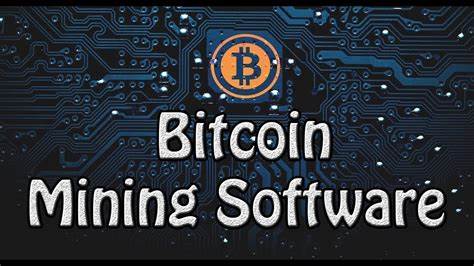Bitcoin mining has gotten very competitive. To earn cryptocurrency, people run software that processes Bitcoin transactions. As more people mine Bitcoin, it gets harder to earn money doing it. This article explains ways to optimize your mining software so you can stay profitable. The tips cover making the software run faster, use less electricity, and maximize the cryptocurrency you earn. With the right optimizations, your mining software can work more efficiently.
Table of Contents
- Introduction to Bitcoin Mining Software
- Understanding Mining Software Efficiency
- Choosing the Right Mining Software
- Hardware Considerations for Software Optimization
- Overclocking and Cooling Solutions
- Power Management for Mining Rigs
- Pool Selection and Load Balancing
- Network Latency and Connectivity
- Monitoring and Remote Management Tools
- Fine-Tuning Mining Software Parameters
- Security Best Practices for Mining Software
- Regular Updates and Maintenance
- Benchmarking and Performance Evaluation
- Troubleshooting Common Mining Software Issues
- Conclusion
Introduction to Bitcoin Mining Software
Bitcoin mining software is very important for Bitcoin mining. The software connects your mining hardware to the Bitcoin network. It makes sure your hardware helps solve the math problems needed to process Bitcoin transactions. Without the software, your hardware can’t contribute to Bitcoin mining. The software makes your hardware work with the Bitcoin blockchain. This allows you to participate in validating transactions and earning cryptocurrency rewards.
Understanding Mining Software Efficiency
The efficiency of your mining software significantly impacts your mining rewards. Efficient software can maximize your hash rate, which is the computational power used to mine new blocks. Optimal hash rates lead to increased chances of successfully mining a block and receiving Bitcoin rewards.
Choosing the Right Mining Software
Choosing the right mining software is key for successful Bitcoin mining. When picking software, check that it works with your mining hardware. Also look at features like solo vs pool mining, the interface design, and how trusted the developers are. The software needs to match your hardware and have the features you need. This helps ensure your Bitcoin mining is efficient and effective.
Hardware Considerations for Software Optimization
To optimize your mining software, it’s essential to have hardware that complements the software’s capabilities. Choose high-quality graphic cards (GPUs) or application-specific integrated circuits (ASICs) to achieve optimal mining performance.
Overclocking and Cooling Solutions
Overclocking involves pushing your hardware to operate at higher frequencies than their default settings. Properly executed overclocking, coupled with efficient cooling solutions, can lead to a significant increase in mining efficiency.
Power Management for Mining Rigs
Managing power consumption is critical for optimizing your mining operations. Implement power-saving strategies, such as using energy-efficient hardware and configuring your mining rig for optimal power usage.
Pool Selection and Load Balancing
Joining a mining pool can enhance your chances of consistent earnings. Choose a reputable and well-established pool that offers fair rewards distribution. Load balancing across different pools can further improve your mining efficiency.
Network Latency and Connectivity
Low network latency and stable internet connectivity are vital for mining success. Minimize network downtime and ensure a reliable connection to prevent disruptions to your mining operations.
Monitoring and Remote Management Tools
Utilize monitoring and remote management tools to keep track of your mining hardware’s performance and health. These tools enable you to make real-time adjustments and troubleshoot issues promptly.
Fine-Tuning Mining Software Parameters
Most mining software allows for parameter adjustments that can influence mining efficiency. Experiment with different settings to find the optimal configuration for your hardware and mining pool.
Security Best Practices for Mining Software
It’s very important to keep your mining software and systems safe. Use strong passwords and two-factor authentication. Also update the software and operating system regularly. Doing these things helps protect against security threats. Secure software reduces the risk of your Bitcoin mining being hacked or disrupted. It helps make sure your mining keeps working smoothly.
Regular Updates and Maintenance
Stay up-to-date with the latest software updates and bug fixes to ensure smooth mining operations. Regular maintenance, such as cleaning dust from hardware components, can also prolong the lifespan of your equipment.
Benchmarking and Performance Evaluation
Periodically benchmark and evaluate your mining rig’s performance. This helps you identify potential bottlenecks, hardware degradation, or software inefficiencies that may be affecting your mining output.
Troubleshooting Common Mining Software Issues
You’ll likely have to fix some mining software problems sometimes. Issues can be networking errors, hardware not working right, or program crashes. Learn how to troubleshoot these types of issues. That way you can solve problems quickly when they happen. Fast troubleshooting means less downtime for your mining. It helps keep your mining running smoothly and efficiently.
Conclusion
Improving your Bitcoin mining software takes some work. You need to understand hardware, be good with software, and be committed. This article explains ways to optimize mining software. Following the tips can boost your mining, raise your success rate, and increase the Bitcoin you earn. The strategies cover making changes to get the most out of your software and hardware. With optimization, your Bitcoin mining can become more efficient and profitable.
FAQs
- Q: What is Bitcoin mining software?
- Bitcoin mining software facilitates the process of mining by connecting your hardware to the blockchain network, enabling you to contribute computational power to validate transactions and earn rewards.
- Q: How do I choose the right mining software?
- Consider factors such as hardware compatibility, features, user interface, and developer reputation when selecting the most suitable mining software for your needs.
- Q: What is overclocking, and how does it affect mining efficiency?
- Overclocking involves running your hardware at higher frequencies than default settings. While it can boost mining efficiency, proper cooling solutions are necessary to prevent overheating.
- Q: Why is network latency important for mining?
- Low network latency ensures a stable connection to the blockchain network, minimizing disruptions to your mining operations and optimizing your chances of earning rewards.
- Q: How often should I update my mining software?
- Regularly update your mining software to benefit from the latest bug fixes, improvements, and security patches, ensuring smooth and efficient mining.
RELATED POSTS
How to Optimize Bitcoin Mining for ASIC Miners: A Comprehensive Guide
How to Optimize Ethereum Mining for ASIC Miners: A Comprehensive Guide


